Today, Delhi’s sacred river –The Yamuna—is completely lifeless and toxic. Due to this ecological condition, the Shahadra Drain has become a barren wasteland of black-water, sewage, contaminated soil, and trash. The Shahadra Park serves to bring life back to the site. Situated in -between the dense, urban fabric, this highly vegetated, open space offers an escape from Delhi’s over-congested lifestyle.
In order to remediate the water, the drain is reshaped into a meandering constructed wetland. The form allows phytoremediation, the mitigation of contaminated water through aquatic vegetation, to take place. This natural process eliminates the need for excavation and the disposal of chemicals, metals, and sludge to alternative sites. In addition, this intervention calls for the completion of the existing sewage treatment plant, which remains unfinished at the tip of peninsula.
Improving the existing water quality allows this site to become a critical moment between two densely populated areas—Vasundhara Enclave and Patparganj Industrial Area. Currently, Delhi’s East Bank lacks program, amenities, and urban infrastructure. The project aims to bring prosperity and human experience to the site with an expansive mandi. Elevated over the sewage treatment plant, this large-scale market creates a new ground plane over the drains. The platform acts as an undulating landscape that shelters high-intensity commercial activity and bridges select areas around the site with¬ circulation ramps.
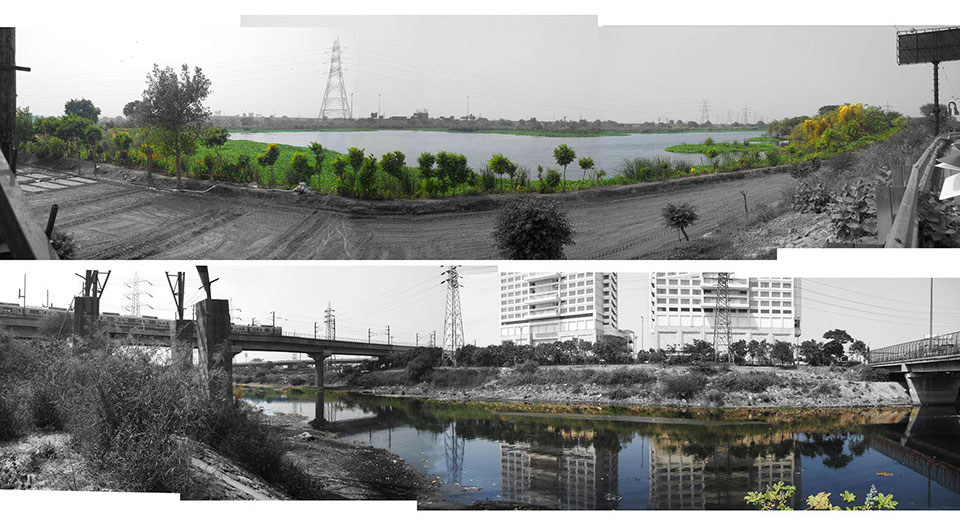
Existing condition of Shahadra Drain.
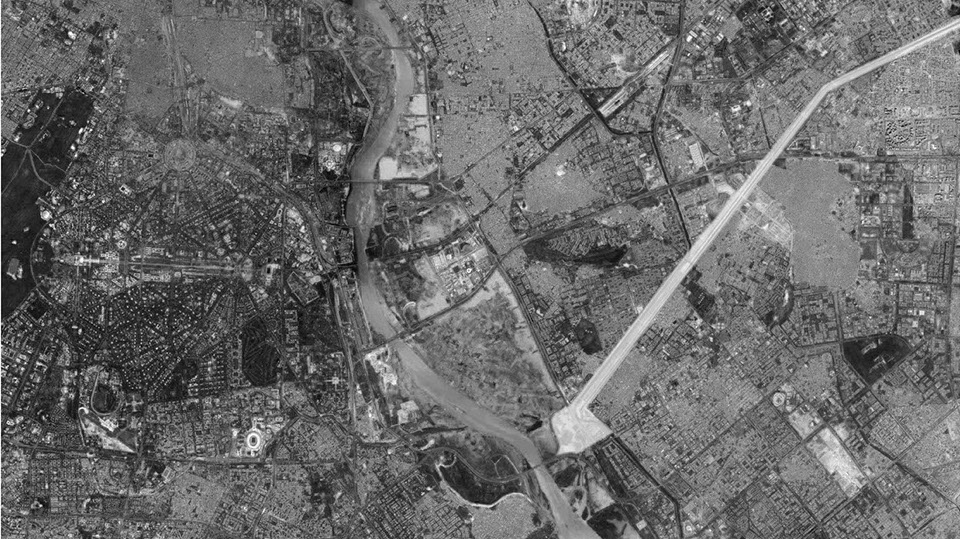
Aerial site context.
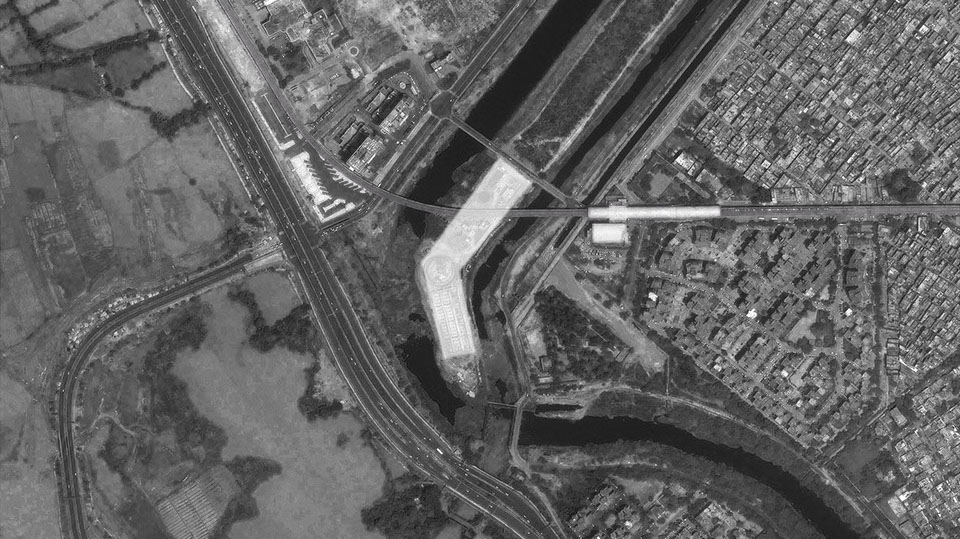
Shahadra Drain.
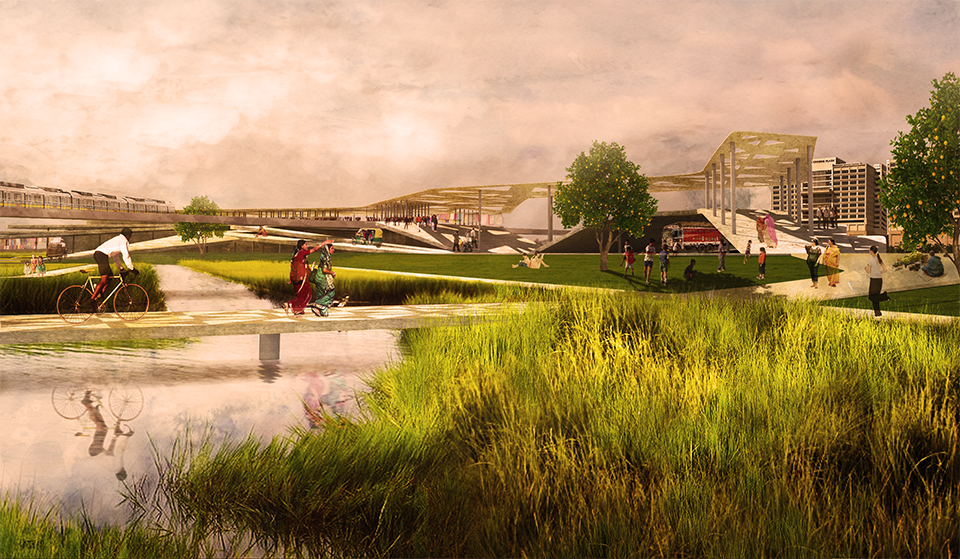
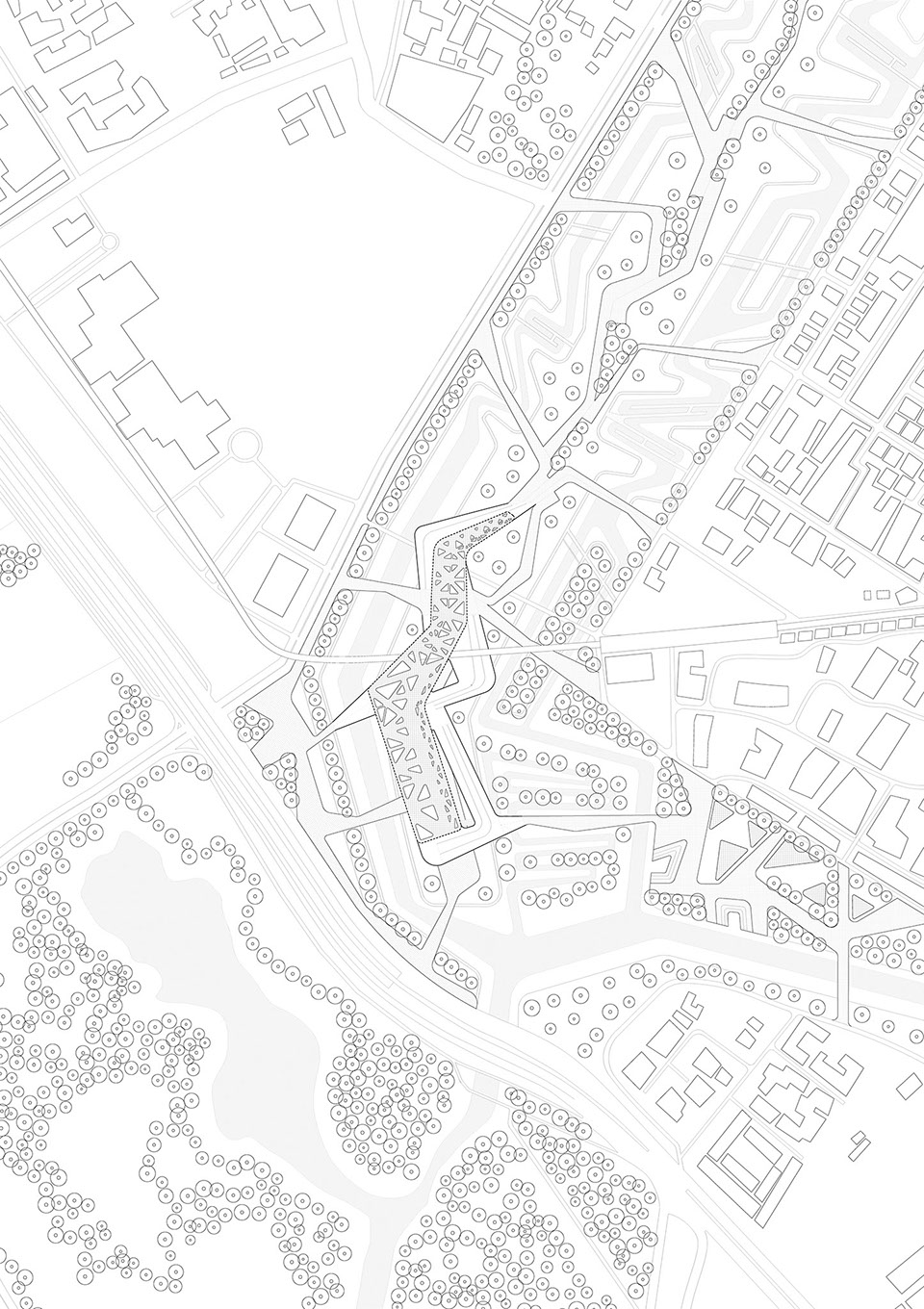
Conceptual site plan.
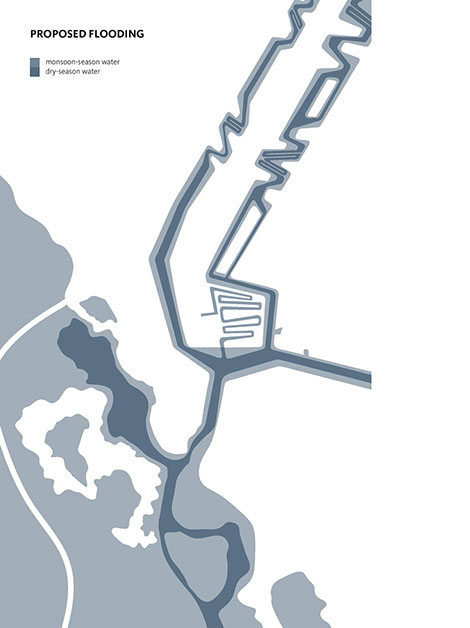
Meandering Drain: Remediation islands and constructed wetlands.
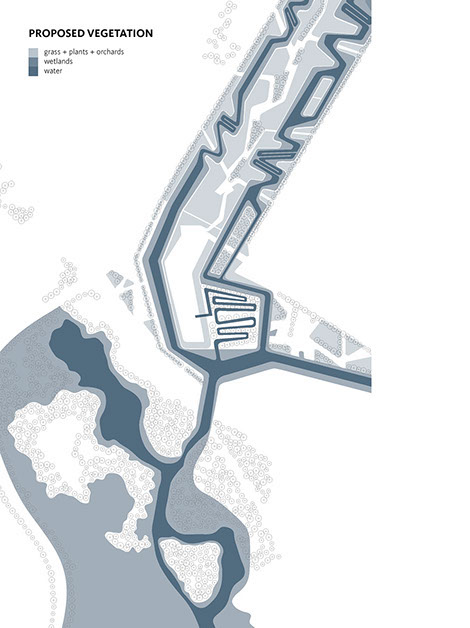
Biodiversity Park: Water plazas, gardens, playground, orchards and promenade.
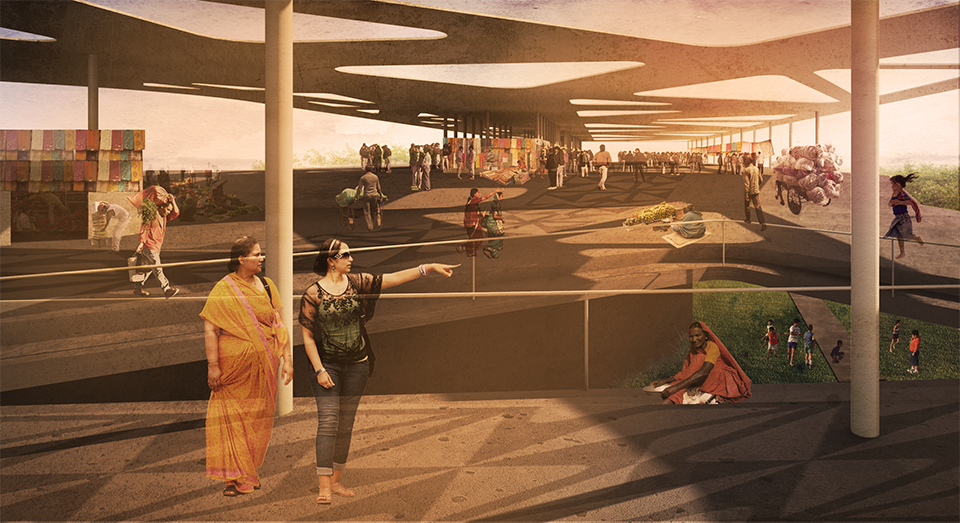
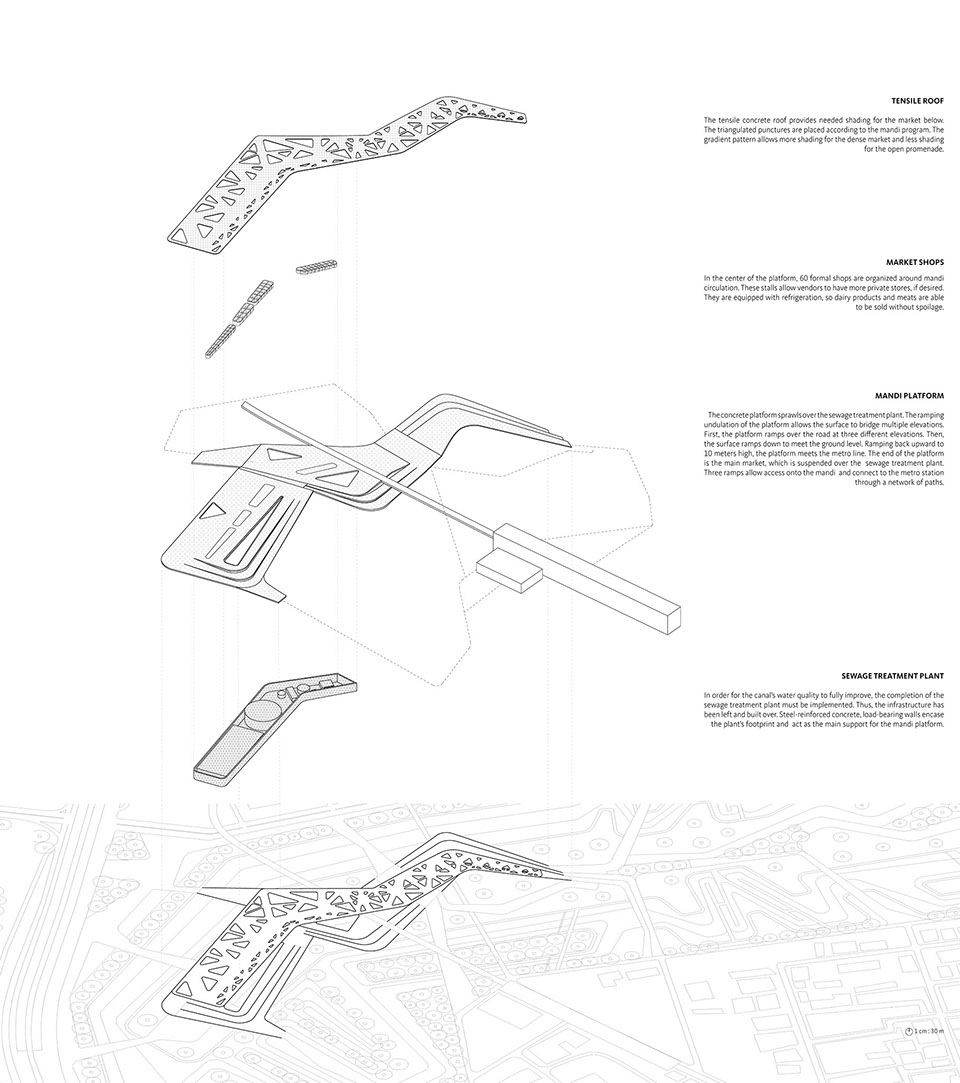
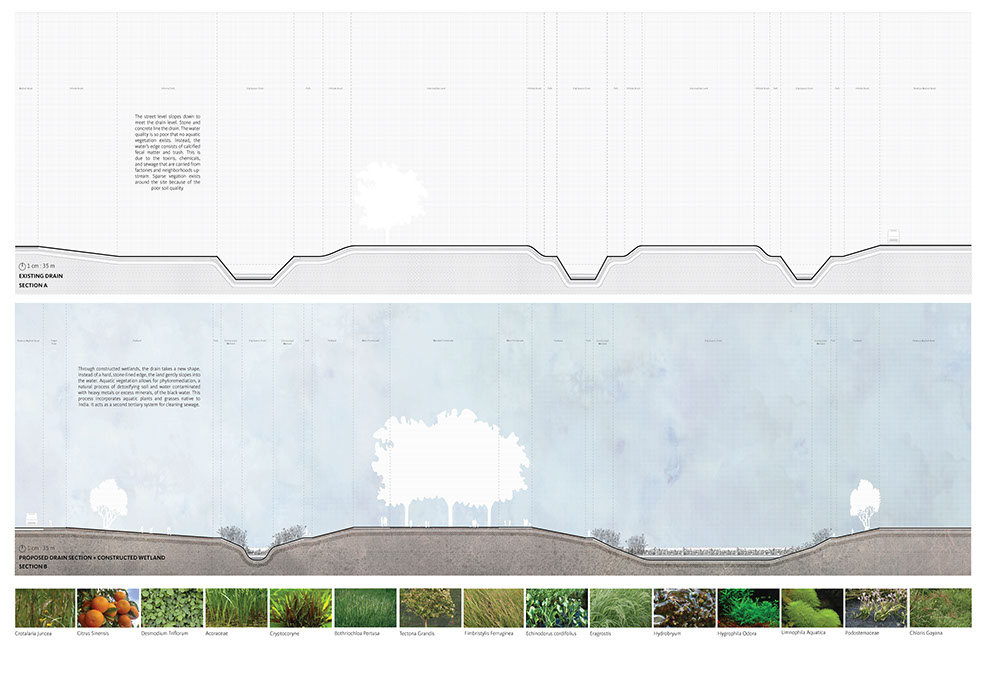
Existing and proposed drain sections.
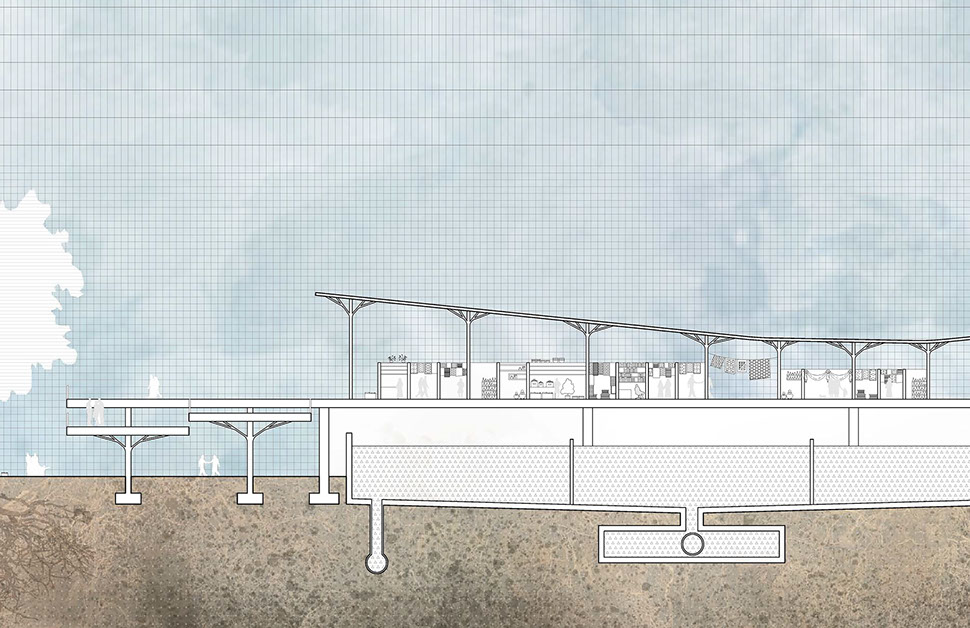
Mandi Section A.
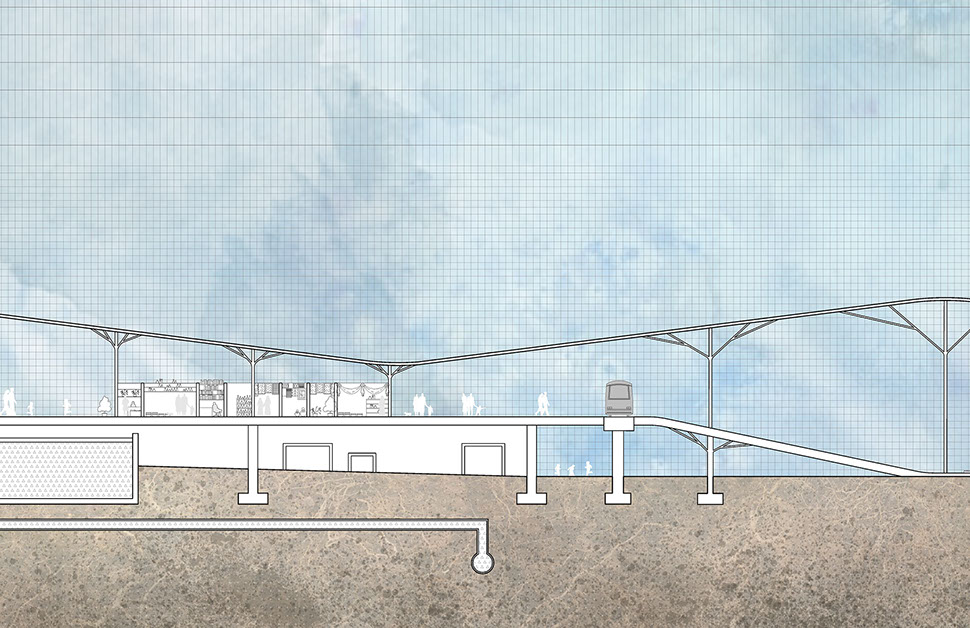
Mandi Section B.





